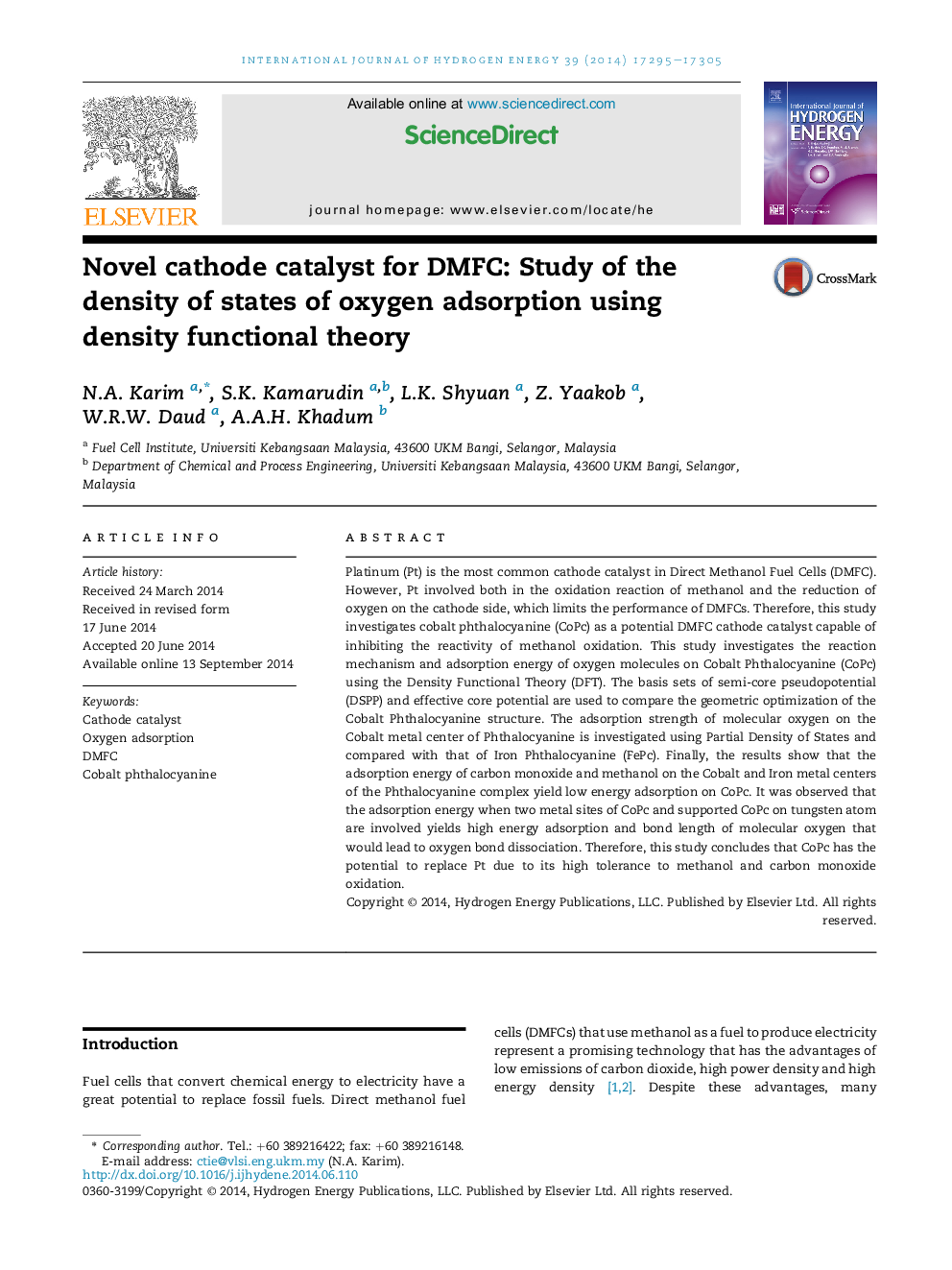| Article ID | Journal | Published Year | Pages | File Type |
|---|---|---|---|---|
| 1272185 | International Journal of Hydrogen Energy | 2014 | 11 Pages |
•This study investigates the reaction pathways and different model structure of CoPc.•CoPc has high possibility to dissociate the oxygen molecule bond and forms water.•CoPc also has high tolerant towards methanol and CO.•This study proves that CoPc potential to replace Pt in cathode catalyst of DMFC.
Platinum (Pt) is the most common cathode catalyst in Direct Methanol Fuel Cells (DMFC). However, Pt involved both in the oxidation reaction of methanol and the reduction of oxygen on the cathode side, which limits the performance of DMFCs. Therefore, this study investigates cobalt phthalocyanine (CoPc) as a potential DMFC cathode catalyst capable of inhibiting the reactivity of methanol oxidation. This study investigates the reaction mechanism and adsorption energy of oxygen molecules on Cobalt Phthalocyanine (CoPc) using the Density Functional Theory (DFT). The basis sets of semi-core pseudopotential (DSPP) and effective core potential are used to compare the geometric optimization of the Cobalt Phthalocyanine structure. The adsorption strength of molecular oxygen on the Cobalt metal center of Phthalocyanine is investigated using Partial Density of States and compared with that of Iron Phthalocyanine (FePc). Finally, the results show that the adsorption energy of carbon monoxide and methanol on the Cobalt and Iron metal centers of the Phthalocyanine complex yield low energy adsorption on CoPc. It was observed that the adsorption energy when two metal sites of CoPc and supported CoPc on tungsten atom are involved yields high energy adsorption and bond length of molecular oxygen that would lead to oxygen bond dissociation. Therefore, this study concludes that CoPc has the potential to replace Pt due to its high tolerance to methanol and carbon monoxide oxidation.
